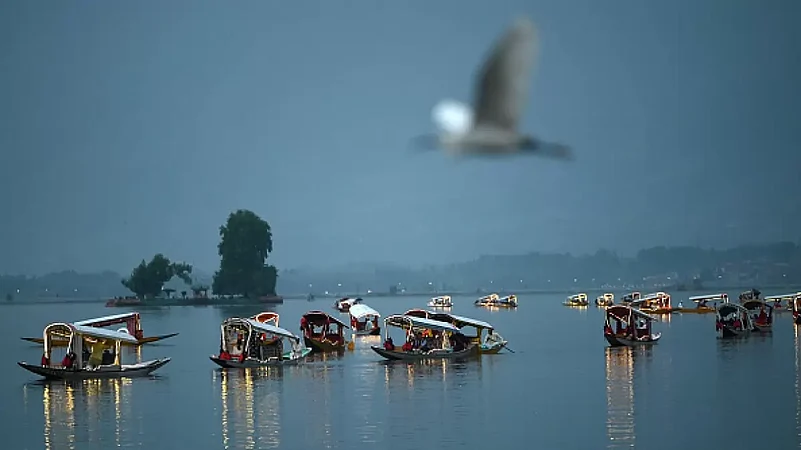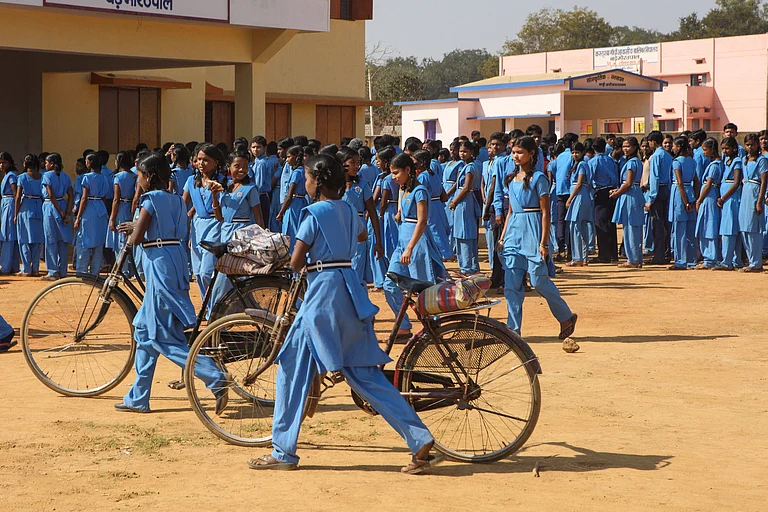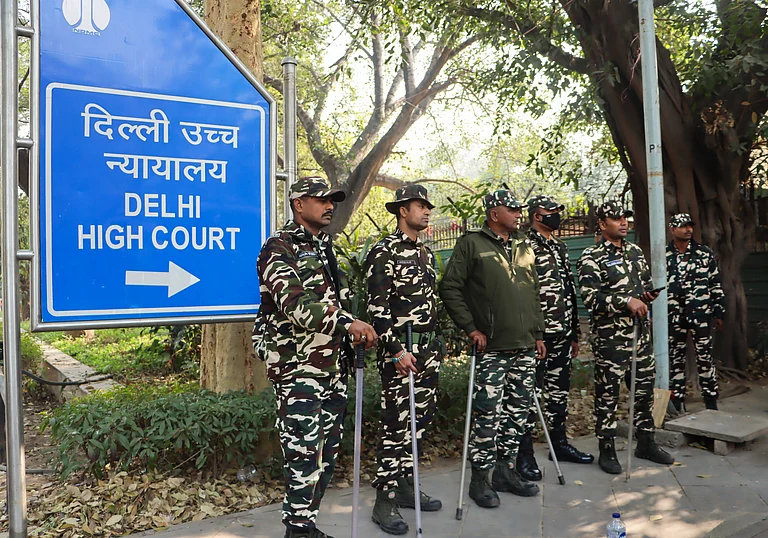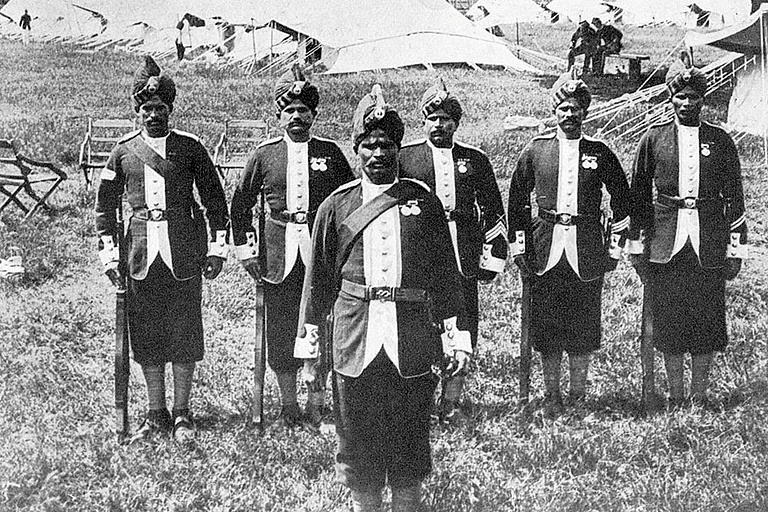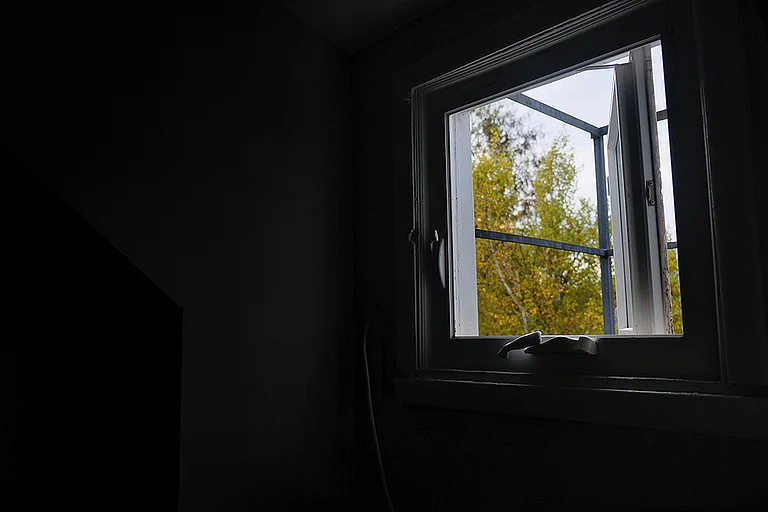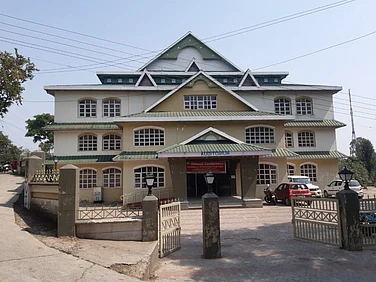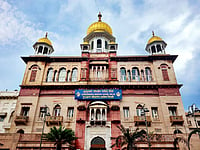“The end may justify the means as long as there’s is something that justifies the end” - Leon Trotsky
Five years after Governor's rule and four years after the abrogation of Article 370 & 35A and bifurcation of the once largest princely states of British India, Jammu and Kashmir, into two Union Territories (J&K and Ladakh), has the current political dispensation been able to address the fallouts of the abrogation of Article 370? Has the Article 370 move successfully able to achieve its objectives as it was claimed or the idea of a so-called Naya Kashmir was a mere political rhetoric? Though a lot is being said by J&K's Lieutenant Governor about the improvement in various development indicators like literacy rate and mortality rate, which their government has achieved in the last five years, in reality, the economic survey of 2018-2019 suggests that J&K was the best-performing state, with good growth and development indicators, surpassing states like Gujarat.
“Democracy cannot be effective without the active participation of its citizens,” thus how can one expect to run an erstwhile state as complex as J&K without any democratically elected government? For the last five years, Jammu and Kashmir is without any democratically elected institutions and the absence of public participation in policymaking has led to a state of policy paralysis. For instance, the central government's decision to bring domicile law for jobs in J&K, shifting of service matter cases to CAT bench in Chandigarh, domicile law for land, installation of toll plazas was strongly objected by the people of J&K and thus, forced the central government to roll back and amend the policies. Though the new domicile law was historical and instrumental in ending the decade-long struggle, pain and misery of Valmiki Community, Gorkha Samajh and West Pakistan refugees, it also ignited the debate on protection of jobs and land rights of the people of J&K. The original PRC Act of 1927 enacted by the then Maharaja of J&K, Maharaja Hari Singh had defined four classes of domicile other than the original PRC holders. The original PRC act had nothing to do with Article 370 and it could have easily been reinstated even after the abrogation of Article 370 but instead 1.25 crore people of J&K were forced to give up their PRCs and apply for New Domicile Certificates amid a Global Pandemic.
Is it the right time to celebrate the promise of a better future or is it a time to comprehend?
The uniqueness of the vast civilisational and political history of Jammu and Kashmir and its assimilating culture can be accredited to its unique geographical location in the Himalayas. The political history of J&K has been discussed in great detail across various national and international platforms but sadly there has been a dearth of reference to its constitutional history.
The constitutional history of J&K is unique and dates back to the period of 1846, the time when the Treaty of Amritsar led to the foundation of the State of J&K. J&K had its own laws and provisions under RPC, Ranbir Penal Code. The circumstances under which J&K became an integral part of India arose out of the partition of 1947 and the war between India and Pakistan. The instrument of accession defined the relationship between India and J&K as it was the case for all the other princely states. J&K only signed the instrument of accession and not the instrument of merger. The entire situation which has different versions in history led to the drafting of a separate constitution of J&K under Article 370 of the Indian Constitution. The original Permanent Resident Certificate Act of 1927 and its clauses were amended and the rights of the permanent state subjects were thereafter protected by article 35A of the Indian Constitution.
On 5 August 2019, Home Minister Amit Shah from the floor of Parliament announced to abrogate Article 370 and Article 35A and moved legislation which bifurcated J&K into two Union Territories. It was quite disappointing to see that the state's vast territorial integrity for which great warriors like General Zorawar Singh sacrificed his life in 1842 in the mountains of Tibet and Ladakh was on this day bifurcated and downgraded into two union territories. Internet was suspended, land-lines disconnected and no media was allowed to report from Kashmir. The situation in Jammu was normal as most of the people from the region had supported the move on the pretext that it will end the age-old dominance of Kashmir-based political parties and the power corridor will now shift with Jammu getting its equal share. But over the last five years, it is the Jammu region which has been protesting against the government policies post the abrogation of Articles 370 & 35A. During the past five years, news reports suggest that whether it’s the internet ban, domicile law, land law, growing unemployment rate, toll plazas, or grant of statehood, it has been the people of Jammu who have been on roads protesting against the governments arbitrary and ill-conceived policies.
Among all other states and UT, J&K was also the host for this year's prestigious G20 summit but once again Jammu was not in the picture and the entire event was hosted in Kashmir. There is a strong anti-incumbency factor against the current political establishment for various reasons. First, the people of Jammu feel politically disempowered & ignored as there have been no elections in the erstwhile state for the last five years. Second, the erstwhile state was downgraded into a UT.
Though temporary Article 370 is still part of the Indian Constitution. Other than the instrument of accession it was Article 370 which defined J&K to be the integral part of India. The government used the same Article to announce that the special status granted under this Article to J&K has ended. But a State with such vast cultural, linguistic, regional, ethnic and topographical diversity, was it the right decision to downgrade and bifurcate it into two union territories? This is something which now the Supreme Court has to decide as a five-judge special bench is hearing the batch of petitions on abrogation of Article 370.
From the administrative point of view, it is not possible to run a territory as large as J&K if it continues to be a UT.
With the abrogation of Article 370 came the idea of Naya J&K and a long list of announcements which aimed at changing J&K into a developed and prosperous region. Some of the proposed announcements were industrialisation, new job opportunities for youth, expansion of the horticulture and handicraft industry, boost in the tourism industry, reviving educational institutions and employment opportunities etc.
But has any of these objectives been achieved, benefiting the people of J&K, is something we all need to deliberate upon.
J&K is a landlocked region sharing its border with Pakistan, China and Afghanistan. Every day in and day out you will find ceasefire violations and disturbances across the LOC. Thus, you will not find any large-scale industries or manufacturing units in J&K. Its true potential lies in horticulture, tourism, handicraft and agro-based industries. Another reason for an underdeveloped industrial sector is the lack of raw materials and huge transportation costs. Also, because of the vagaries of Article 370, the private sector couldn’t develop at its full potential. Therefore, in the absence of a private sector, the youth of J&K mostly rely upon Government jobs. But in J&K the last four major recruitment processes conducted by JKSSB have turned out to be a scam where lakhs were paid to get selected as Sub Inspectors in JKP, Account Assistants and JE. The matter is still under investigation by CBI. In the name of huge job packages, the youth of J&K has only witnessed scams & irregularities. This has led to an increase in the unemployment rate in J&K. The youth of J&K has moved from a state of Joblessness to Hopelessness. But sadly no national media is talking about these issues. Nothing much has been done to bring in investment to create jobs and employment opportunities. Eg The Global Investor Summit despite all the Pomp and Show couldn’t gather much investment to create desh job opportunities. There have been many flagship schemes and skill development programmes implemented by the govt of J&K but they have not been able to provide jobs and sources of income to the youth of J&K. The government has even failed to find solutions to the institutional flaws in the implementation of existing job policies like Rehb-Re-Khel & Talim ( contractual employment in Sports & Education department).
As per the Economic Times report, dated June 2019, the unemployed rate in J&K was at 15.89%, the lowest in the country during that period. But today, after five years and no major employment policy the number of unemployed Youth is running in Lakhs. The decade-old UPSC Age relaxation granted to the domicile of J&K which used to compensate for the years lost to violence, conflict and forced migration was untimely scrapped.
The digitisation of land records by the Govt of J&K under LG Manoj Sinha was a welcome step as J&K was one of those regions where the records were still on paper making the entire exercise tedious and cumbersome. But has digitisation of records been able to ease the cumbersome exercise of accessing & registering land records? The ground reality is totally different. Instead of properly feeding the records the govt has uploaded the photographic version of the records. The first rule of data analytics is to make access easy but here in order to access your file, you have to go through hundreds of records making the entire exercise cumbersome. Also, after the J&K official language bill five languages were adopted as the official languages of J&K, giving Dogri its deserved recognition, but the govt has not been able to provide the records in five languages.
In order to redress the grievances at the grass root level, the J&K administration implemented schemes like My Town My Pride and Back to Village programmes. But in most cases, due to the absence of the impetus of a democratically elected government, the grievances are only registered but not addressed.
According to the report by the Parliament panel, more than 10% population of J&K has become drug addicts i.e. 1.3 million people.
In another report submitted in the parliament by MoS for Home, Ajay Mishra, 9,765 women have gone missing in the last three years. The survey by National Crime Records Bureau suggests that the crime rate in J&K has also increased. One of the main arguments given behind the abrogation of Articles 370 & 35A was giving equal rights to women as under Article 35A women marrying outside the state cannot transfer their property to their offspring but now when the safety of women is at stake, no one is even talking about women safety. Also, After the 2002 High Court judgement the status quo regarding Article 35A got changed though it was not adopted in the gazette notification by the then NC govt but still data suggests that many women got their land transferred to their children through court intervention.
One sector which has seen a major boost in Jammu, as well as the Kashmir region, is the tourism industry. For the first time, J&K will have its own tourism policy. As per the latest economic survey, J&K's tourism policy, which was formulated in the year 2020, is a holistic framework for sustainable and responsible growth of the tourism sector and aims at improving the conditions for tourism development, supporting tourism industries, and strengthening tourism-support functions. Further, all efforts are being made to harness the opportunities available in the sectors like adventure tourism, caravan tourism, helicopter tourism, eco-tourism, pilgrimage tourism, rural tourism, wellness tourism, agro-tourism, mice tourism, heritage tourism and golf tourism.
Under the Smart City project, both Jammu and Kashmir are being developed but to date, no city has been made prone to floods. Roads are being constructed and then they get washed away in floods.
Recently, the world-famous Basohli Painting from the Kathua district in Jammu and Kashmir has obtained the Geographical Indication (GI) Tag. This is the first time in the history of GI registration that the Jammu region got a GI tag for handicrafts. It’s a welcome step as the handicraft from Jammu was not only being promoted but was getting nationwide recognition but is it enough as most of the historical heritage sites are still lying in shambles in J&K. It’s been five years & the restoration work of Mubarak Mandi complex is still underway with only one structure being renovated so far. The proposal to turn the entire complex into a heritage hotel was strongly objected to by the people of J&K. No major step has been taken to promote the Dogri language.
Ladakh which was in favour of the abrogation is today demanding all the benefits which were initially guaranteed under Article 370 & Article 35A i.e. safeguards for land and job rights. Sonam Wangchuk, inventor environmentalist and climate activist has shown concerns about preserving Ladakh's sensitive ecological balance. He has been in protest against the government's approach towards Ladakh.
Changes in society are instrumental only when it achieves the desired objectives. Rather than celebrate, it is time to assess the impact of the new policy framework, acknowledge the ground realities and address all the issues at hand. Ignoring public grievances will result in crisis. Any new policy should not be in idiosyncracy but it should reflect public participation and the will of the people.
With the changing geopolitics around J&K and Ladakh, the geo-political strategy needs to be revisited.
The recent targeted killings in Kashmir of locals and non-locals have forced many Kashmiri Pandit government employees to move back to Jammu. Instead of resettling the Kashmiri Pandit community back to the valley, the government has even failed to provide safety and security to those who have already been serving there.
The Pir-Panjal region covering the districts of Poonch and Rajauri was once the hotbed of terrorism in J&K but back then the locals along with the Armed forces fought against growing acts of terror and put an end to it. Now, almost after two decades, the region has witnessed terrorist attacks where locals have been targeted. The entire region has been destabilised.
Thus, the government needs to change its approach towards tackling cross-border terrorism.
Lastly, Government must start acknowledging the local voices and their concerns and that must reflect in policy-making as well. Interest trumps passion and our interest should be the development of J&K. We cannot run a State as complex as J&K like a Municipal Cooperation thus restoring democratic rights, statehood and resumption of the political process becomes very essential.
(Kanwal Singh is a youth activist and columnist from Jammu & Kashmir.)






